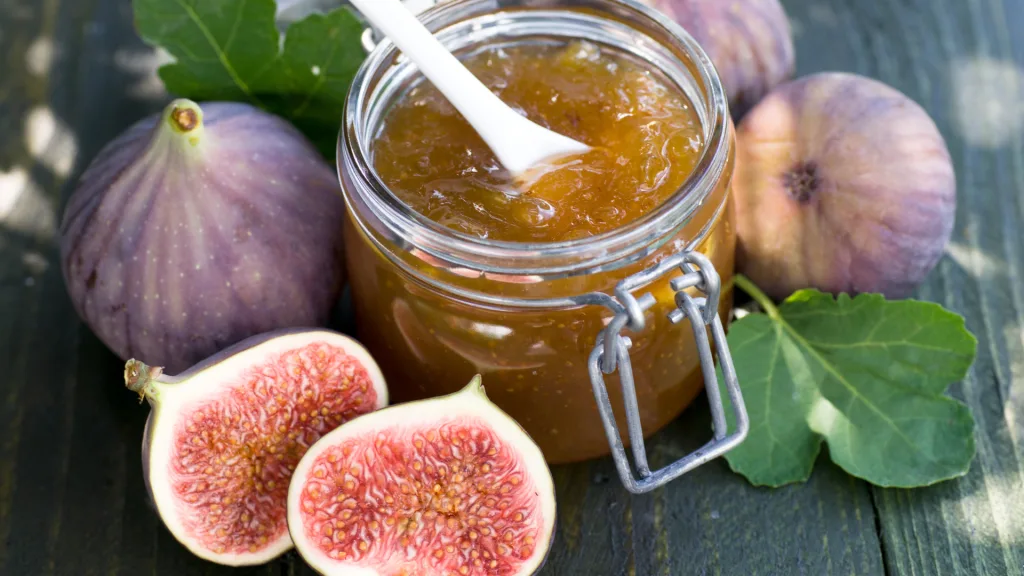Figs are one of the most sought-after fruits of the summer. Cultivated since pre-history in Asia and the Mediterranean, this plant grew up alongside human civilization. For some cultures, it appears in myths and legends.
The truth of the matter is that figs aren’t fruit. Even though farmers sell it alongside other fruits, it’s totally unique.
Today, we’re cutting open the history of the fig, debunking some myths, and revealing the truth behind nature’s perfect bite.
Let’s jump in!
The History of Figs
As early as 4000 BCE, farmers in Asia began cultivating Ficus carica for its fruit. For early cultures, having a reliable food source made all the difference. In the east, figs found a place as food and religious object. People worshipped them as a symbol of fertility and sensuality.
Ancient Greeks thought they were a gift from Demeter, the goddess of agriculture and fertility. Each year, they served as a symbol of the harvest. Greeks included dried figs in their diets, serving as an essential source of calories for the rich and poor.
Romans associated them with Bacchus, the god of wine and sensuality. They celebrated them in festivals that would make most of us blush.
In Judeo-Christian mythology, Adam and Eve leave the Garden of Eden clothed in the plant’s leaves. Some argue that the apple from the Tree of Knowledge of Good and Evil was actually a fig.
Figs made the journey from Europe to North America in possession of Father Junipero Serra. He brought the plant with him from Spain in 1769 and planted them in the mission of San Diego. Ficus carica was the perfect addition to the arid regions of California, so much so that it became a significant crop.
In 1900, farmers brought in the first commercial crop, and an industry was born. Most of the dried figs on the market come from California. But fresh ones appear at farmer’s markets twice a year.

If a Fig Is Not Fruit, What Is It?
Figs are the inverted flower of Ficus carica. Hidden by the outer skin are over 1,000 blossoms. Cutting into it reveals these seeds pollinated by wasps. The process of pollination in these trees is known as caprification.
Caprifigs are an inedible species of the plant, but their pollen is the main reason edible varieties grow. The flowers contain both male and female blossoms. The wasps live in the flower of the caprifig and go out to lay eggs. When they fly out, their wings fertilize the edible figs.
Inflorescence
To be obnoxiously specific, figs aren’t fruit. They’re an inflorescence. This term refers to a cluster of flowers or blooms within a bulbous stem. Because the flowers grow inside the stem, there’s a unique process to fertilize the blooms.
Plants fertilize their flowers in any number of ways. The wind, bees, birds, and sometimes flies spread pollen from male flowers to female flowers. The fig evolved alongside the fig wasp in a mutually beneficial relationship.
Did I Eat a Fig Wasp?
Fig wasps and figs are inseparable, sometimes literally. The queen is precisely the right size to get inside the female inflorescence. Carrying pollen from other varietals, she squeezes into a female fig, losing antennae and wings in the process. After laying eggs, the queen dies, and the fig itself digests her body.
The eggs hatch inside, and the offspring of the queen mate to carry on the lifecycle. Male wasps carve a path to the outside world. Females follow them out, carrying pollen onto the next tree.
Cultivated figs are unique because they don’t need pollination to produce. On the other hand, those in the wild require pollination by wasps. So if you’re eating wild fruit, chances are there are bits of male fig wasps in there.
Pro Tip: Check out the buzzzzz…find out Are There Really Dead Wasps in Figs?

Can You Grow Your Own Figs?
Fig trees grow well in warmer climates. In the United States, they’re common in California, Oregon, Texas, and parts of the southeast. Because only these specialty wasps pollinate the tree, most insects ignore the plant. Birds are a different story.
An easy plant to grow, Ficus carica requires a few things to be truly successful. The tree needs full sun and warmer temperatures. That’s not to say if your climate has cold weather, you’re out of luck. In colder climates, simply mulch or cover with fabric when freezing weather is forecast.
Several varieties do well in the “coastal south,” including Celeste, Brown Turkey, Brunswick, and Marseilles. They range from pear-shaped to oval and may be brown, green, purple, or almost black.
Once you’ve got an established tree, they need very little pruning. Figs usually sprout from the end of the previous year’s growth, so aggressive pruning ruins the crop.
We don’t recommend planting anything near a fig tree as they choke out anything in their footprint.
Are Figs Good For You?
Figs played an important role in the diets of early civilizations. They pack a lot of nutrition into a small package and are relatively easy to grow. For ancient people in the Mediterranean and Egypt, the plant connected them to the gods.
Contemporary science supports some of the ancient ideas surrounding figs. They are a low-calorie food that supplies essential nutrients. One raw fig has 37 calories and comes packed with potassium, magnesium, iron, and calcium. Dried figs have a higher calorie count and more concentrated amounts of nutrients.
While figs are healthier than some other sweet options, they aren’t unique when it comes to nutrition. They do have high amounts of fiber which slow the absorption of sugar. As part of the Mediterranean diet, you can make worse choices in your quest for healthy eating.

What Can You Do With Fresh Figs?
Fresh figs are best eaten directly off the tree or as close to harvest as possible. They’re delicate and don’t travel well. If you’re lucky enough to have them in your yard or nearby, simply pick, wash, and eat the delectable gems.
They’re also excellent added to a salad of arugula, goat cheese, and walnuts. Just chop them into small pieces and toss them with the salad.
Another recipe involves blending cream cheese with macadamia nuts and honey. Spread the prepared cream cheese on the fresh fig and wrap it with prosciutto.
Because of their naturally high sugar content, they make delicious jams and chutneys. There are many recipes for cakes, tarts, and pies using fresh produce.
Fresh figs also grill well and frequently accompany roast pork or lamb. We’ve even put slices on pizza!
Pro Tip: Nobody wants fruit covered in bugs! Keep your figs fresh by using this guide on How to Easily Get Rid Of Fruit Flies.
Can You Preserve Figs?
Figs taste best fresh and don’t keep well, so preservation is necessary to enjoy them year-round. You can maintain summer year-round using basic methods that’ve been around since ancient times.
Whole preserved figs are a staple in some areas, and there is debate about the best way to do it. Those in heavy syrup with lemon, called southern preserved figs, are popular.
But you can change it up by adding warming spices for a new flavor profile. Some folks even preserve figs in bourbon by cooking them in simple syrup and adding the liquor at the end.
Pickled figs, like pickled okra, take a bit more time to prepare, but they’re worth it. Trust us. This sweet pickle fits well within a Mediterranean dish or as an easy snack.
Freezing figs, with or without the peel, is another way to catch them at their peak. And because they ferment quickly, they make delicious fermented fruit spreads.
However you preserve them, figs make the perfect addition to many sweet and savory recipes.
Summer’s Tastiest Treat Exposed
Since ancient times the fig has served as an essential source of nutrients. More than that, they played a role in mythology and ritual as food from, or for, the gods. Perfect fresh from the tree or preserved, these non-fruits are part of the story of humanity. Easy to grow, you can cultivate your own tree for the perfect summer treat.
And if you don’t have the desire to grow your own, don’t eat them wild. You could be eating a fig wasp by accident.
We’ll Help You Find the Best Free Camping in the USA
You should give it a try!
As a matter of fact, these free campsites are yours to enjoy. Every time you pay federal taxes, you’re contributing to these lands.
Become a FREE CAMPING INSIDER and join the 100,000 campers who love to score the best site!
We’ll send you the 50 Best Free Campsites in the USA (one per state). Access the list by submitting your email below: